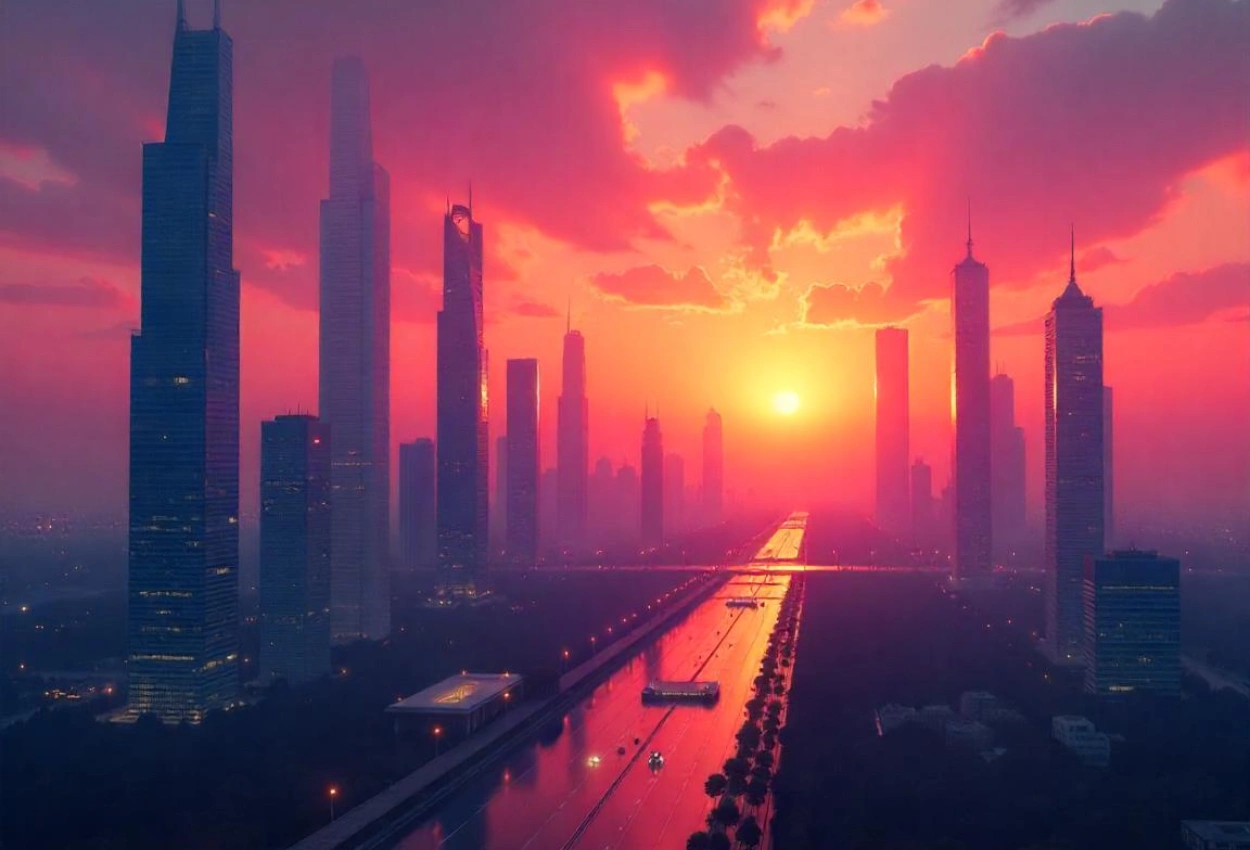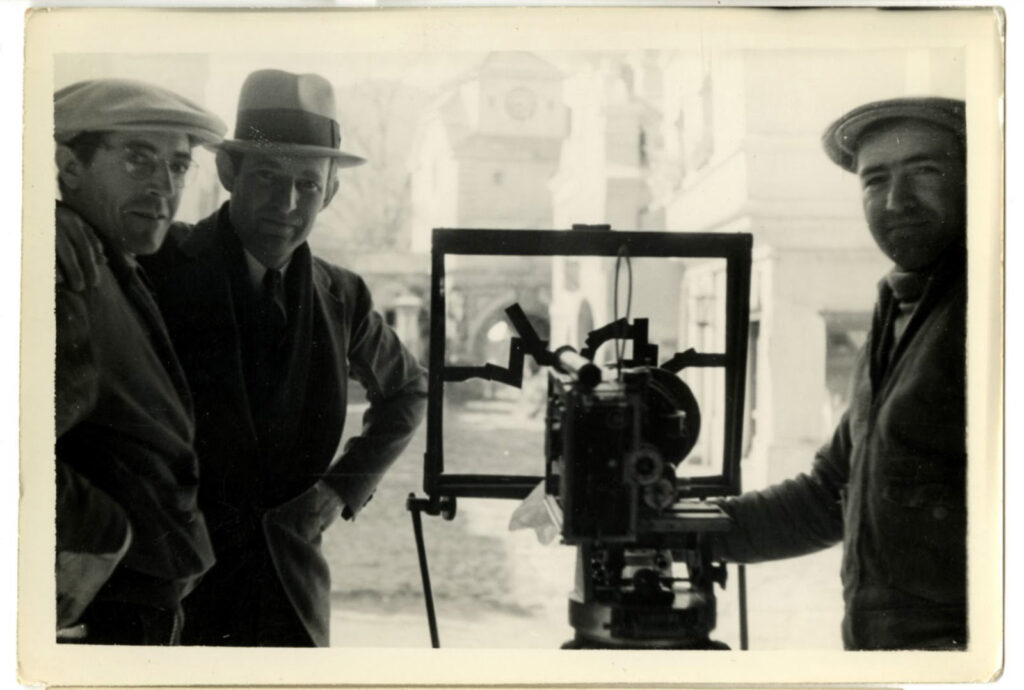
Why Matte Painting Remains Essential in VFX
Matte painting has stood the test of time as a foundational element in visual effects (VFX) from early cinema. It has also continually evolved to meet the demands of storytelling. But in an era dominated by CGI and 3D modeling, why does this art form remain as relevant as ever?
Read on to find out.
In this post, we will explain the history and the process behind matte painting to understand why it’s still valuable for filmmakers, individual creators, and animators. We will also offer insights on how you can handle projects that require top-tier matte painting.
What is Matte Painting?
Matte painting is a visual effects technique that uses a painting, photograph, or digital image to enhance or replace parts of a shot.
Typically, the process involves painting detailed images (traditionally on glass or canvas). Then, these images are composited into live-action footage.
Interesting Facts about Matte Painting
- Matte paintings add expansive or highly detailed backgrounds to scenes without the need for physical sets, reducing production costs.
- They are used for locations that would be impossible or impractical to film, such as distant planets or historical reconstructions.
- They are seen in movies, TV shows, and video games to enhance the visual environment. They are also commonly used in fantasy, science fiction, and historical films.
How is Matte Painting Used in Film?
In film, matte painting has been crucial in helping directors design large-scale or imaginary settings or sets on a low budget that would be too expensive, time-consuming, dangerous, or impossible to film and build in real life.
Plus, besides being cost-effective and time-efficient, matte painting offers creative freedom. It helps filmmakers to push the boundaries of what can be shown on screen.
Matte paintings are widely versatile and used for –
- Wide Shots: Sweeping landscapes, city skylines, or distant planets.
- Close-Ups: Intricate interiors or detailed objects.
- Background Replacements: Adding abstract art, animation backgrounds, or replacing skies.
A Quick Glimpse into the History of Matte Painting
Early Beginnings
The roots of matte painting can be traced back to the early days of cinema in the 1900s. Initially used in silent films, this technique involved painting scenes or landscapes on glass or canvas.
In the 1910s, filmmaker Norman Dawn was credited as one of the first to use matte painting (he used glass shots to create matte paintings). In California Missions (1907), he painted images on glass (placed) between the camera and the scenes during filming to create the illusion of expansive landscapes on a limited budget (see below).


Golden Age of Matte Painting
In Hollywood’s golden age, matte painting became popular with films like King Kong (1933), Gone with the Wind (1939), and The Wizard of Oz (1939). During this period, artists painted on glass panels to create otherwise impossible sets on a budget. By the 1950s, matte painting had become a staple in Hollywood, thanks to its ability to transport audiences to far-off places and times.
Check out how matte painting created epic scenes in King Kong below:
Technical Evolution
With the advent of sound and color in film, matte painting also evolved. Artists began painting directly onto film negatives, which allowed them to integrate their work more precisely with live-action sequences.
Later, optical printers and compositing techniques improved the accuracy of layering these painted scenes over filmed sequences. These innovations led to more detailed, lifelike backdrops, making matte painting an essential tool for cinematic storytelling.
The Digital Revolution in the 1990s
With the rise of digital technology in the 1990s, digital tools replaced traditional matte painting techniques.
Films like Jurassic Park and Titanic paved the way for digital matte painting, where artists used tools like Photoshop, Nuke, and early 3D computer graphics (or 3D-CGI) software like Maya to create highly detailed and realistic environments.
This digital approach also offered a lot of flexibility and control that was not possible to gain with traditional glass panels. For artists, this meant that their ideas could come to life much faster, with far less physical effort.
The New Age of Matte Painting
After the 2000s, matte painting became entirely digitized, with traditional methods gradually phased out.
Today, the process has evolved and involves creating or sourcing images such as photographs or artwork and digitally editing them. These edited images are blended with other elements, like 3D models, CGI, special effects, and practical props, to build amazing scenes.
Is Matte Painting Still Relevant Today?
Yes, matte painting is still used and relevant today. In fact, it is a time-efficient way to create complex visuals without the full cost of CGI.
By leveraging matte paintings, you can save on render times, processing power, and artist hours, which is particularly beneficial on projects with tight deadlines or limited budgets.
Plus, matte paintings offer an affordable alternative to full-scale CGI for static or semi-static scenes. This advantage is especially valuable for indie filmmakers, studios, and video production companies looking to maximize production quality within budget constraints.
With matte painting, you can explore imaginative landscapes, blend styles, and enhance storytelling in ways few other methods can achieve.
Process of Matte Painting
1. Concept Development
Every matte painting starts with a clear vision. In this step, our artists create rough sketches or digital drafts to capture the look, feel, and layout of the scenes.
2. Gathering References
Our artists gather reference images of landscapes, lighting conditions, and specific architectural details to make the painting or scenes look realistic.
3. Creating the Base Layer
The matte artist then establishes the base of the painting, setting the primary background or foundational layer. In digital matte painting, we use software like Photoshop to create and refine this base. This layer will set the scale, atmosphere, and color tones for the rest of the scene.
4. Adding Detail and Depth
Next, details such as mountains, clouds, and intricate textures are layered into the scene to add depth. Our artists use various tools and techniques, including digital brushes and even 3D modeling, to make the background feel three-dimensional and immersive.
5. Adjusting Lighting and Color
To make the matte painting blend with live-action shots, our team then adjusts lighting, shadows, and color tones to match the scene’s atmosphere.
6. Final Integration and Polishing
In the final step, we integrate the matte painting with live-action shots or other visual effects. To do this, we use compositing software like Adobe After Effects or Nuke to blend the background with actors or other elements. If we work on a project with green screens, portions of the painting replace these areas to form a complete setting.
Enhance Your Video Projects with the Best Matte Paintings
High-quality matte paintings make a huge difference in video projects. With the right details, careful layering, and smooth blending, you can get visuals that look amazing and stand out.
You could try doing this yourself… or you could let the experts at Motion Effects handle it. Our team lives and breathes this stuff. We use high-end tools like Nuke to create polished, cinematic matte paintings tailored to your project’s needs.
Whether you’re looking to create breathtaking landscapes or enhance your visual storytelling, they can bring your vision to life with expertly crafted matte paintings that make a lasting impact.
Want to see how we can help? Contact us here.
